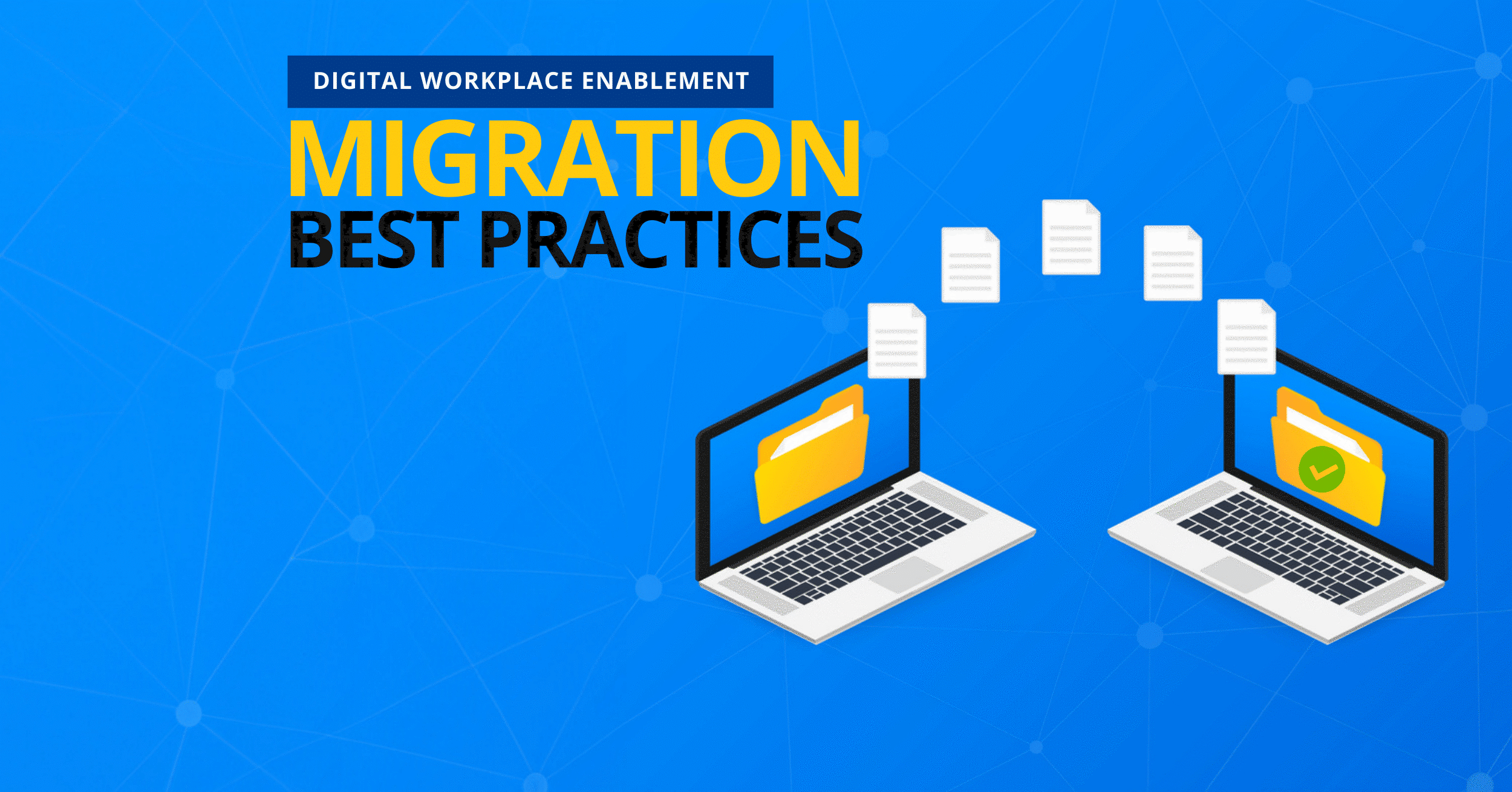4 Must-Know Office 365 Pre-Migration Planning Tips

Want to ensure a seamless Office 365 migration? watch our free webinar on-demand “Planning for Office 365: Managing Content during Your Migration” today!
Poor migration planning naturally leads to a less-than-optimal migration. Based on past experiences, weak premigration planning also tends to be the number one cause of a customer losing confidence in their migration solutions. While AvePoint makes great efforts to encourage mapping things out before the migration takes place, that advice isn’t always well-received by IT professionals.
The planning phase is the correct time to understand where data is stored and how it’s structured. An easy way to determine this is by leveraging a premigration analysis tool. Though the data gleaned from tools like these is crucial, knowing how to approach your end users about its findings can be difficult. Your users might simply blame the functionality of the tool for the missteps instead of poor planning efforts.

While our developers are making constant improvements to our solutions in order to stay aligned with advancements in technology, they only provide the tools and ample information to allow IT admins to make informed decisions on how to build migration plans, policies, and filters. Actually building them is another task entirely.
Coupled with a solid understanding of best practices, here are some handy migration planning tips to help you handle the tasks at hand and decide what contingency plans may need to be considered.
What Should Happen During Premigration?
Several things should occur before you move the first byte.
About to migrate to Office 365 and need some planning tips? Check out this post: Click To Tweet1. Identifying Your Data
The first step is to begin cataloging the data you have and where it’s located.
“Why should I know where everything is, can’t I just make one plan and move it all?”
While this is certainly the simplest approach, it’s been proven to be less than optimal. Let’s use the analogy of moving residences. Whether you live in a studio apartment or in a twelve-bedroom estate, one of the first thoughts you have is visualizing where your belongings will go in your new digs. Other thoughts might include:
- How will I organize the new place?
- How will I get everything moved?
- What’re the logistics involved here?
- What should I throw out before the move?
- Do I have enough boxes and are they the right size?
Believe it or not, you’ve just performed a kind of discovery. You will inherently understand how you should move your information if this mindset is actively applied to migration planning. Through the discovery process you can fully understand where all of your digital belongings are and how you should box them up by creating plans.

2. Data Distribution
Consider not just the volume of data you’re working with, but also how it’s distributed. Let’s look back at the moving analogy. Which rooms or site collections have the most items in them? Are you going to pack everything up together and move it?
No. If you care about your belongings/data, you’ll take the time to carefully plan how you’ll box it all up. You’ll be putting bubble wrap around the more fragile items and stacking the durable items on top of each other.
Something else that should help you visualize the logic behind data distribution is this quote:
“If you have a data set with a volume of 10 GB’s which contains 100 items and you have another data set of 100 GB’s with 10 items, the second data set of 100 GB will usually finish faster than the 10 GB’s.”
This isn’t always the case, but the point is to draw attention to the importance of item count and distribution when considering migration plans.
Testing
Testing is where the reports and a detailed understanding of the environment really come into play. You should begin running small tests to understand the behavior of the destination and how your data will be structured post-migration. Creating mappings to promote or demote sites so they meet the platform’s best practices is also advised.

Application
With discovery, distribution planning, and testing under your belt, it’s finally time to begin taking all this new knowledge and applying it to your migration plans. Creating a migration project with a realistic scope in mind and evenly distributed data will ensure consistent behavior.
Again, you can think of it in terms of moving out of your current home and into a new one. Would you take every item in your home and cram it in one box, and then try to schlep that cumbersome box to the truck, hoist it in and drive across town? No, you wouldn’t. It makes more sense to spend time finding the correct boxes that fit your items and packing them logically.
Once the plans are built and tested, it’s time for the easy part: clicking “Run.”
If the proper considerations are taken into account prior to kicking off the data migration, your users should have a much more enjoyable migration experience. By no means am I implying this will guarantee an event-free migration, but it will ensure that your end users fully understand the best practices you’ve put in place and how to leverage your migration tool properly. Even if you need to contact support in the event of an issue, the support team will be able to source solutions much faster and the entire migration won’t need to be halted while you’re being supported.
For any other questions or if you just want to talk about migrations, please don’t hesitate to chat with me in the comments below!



